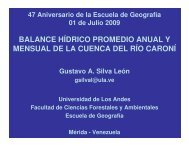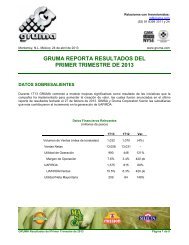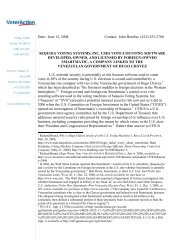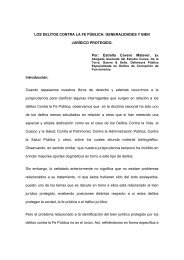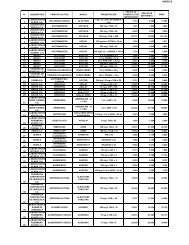broschuere ee zahlen en bf
broschuere ee zahlen en bf
broschuere ee zahlen en bf
You also want an ePaper? Increase the reach of your titles
YUMPU automatically turns print PDFs into web optimized ePapers that Google loves.
Developm<strong>en</strong>t of world population and global primary <strong>en</strong>ergy consumption<br />
3.8<br />
1971<br />
4.4<br />
5.3<br />
6.1<br />
6.5<br />
191<br />
Primary <strong>en</strong>ergy consumption<br />
2008 [gJ/per capital]<br />
77 World<br />
WORLD: gLOBAL USE OF RENEWABLE ENERgIES<br />
67 India 57<br />
6.7<br />
OECD China 23 Rest of<br />
World<br />
514<br />
478<br />
1980 1990 2000 2005 2008 1971 1980 1990 2000 2005 2008<br />
World population [bn.]<br />
Primary <strong>en</strong>ergy consumption calculated by the physical <strong>en</strong>ergy cont<strong>en</strong>t method<br />
Source: IEA [117]<br />
Rest of World<br />
India<br />
China<br />
OECD<br />
232<br />
303<br />
367<br />
420<br />
global primary <strong>en</strong>ergy consumption [EJ]<br />
The great importance of r<strong>en</strong>ewable <strong>en</strong>ergy sources for sustainable developm<strong>en</strong>t is g<strong>en</strong>erally<br />
acknowledged. At national level a variety of instrum<strong>en</strong>ts are used today to promote the developm<strong>en</strong>t<br />
of r<strong>en</strong>ewable <strong>en</strong>ergy sources (s<strong>ee</strong> also pages 38 – 45 and 80 – 81). In terms of absolute<br />
figures, approx. 65,600 PJ of r<strong>en</strong>ewable primary <strong>en</strong>ergy was supplied in 2008 (2007: approx.<br />
62,500 PJ). On average, r<strong>en</strong>ewables have grown by 1.9 % per annum since 1990. Despite<br />
this, the r<strong>en</strong>ewables share of global primary <strong>en</strong>ergy consumption has remained steady betw<strong>ee</strong>n<br />
12 and 13 % since the eighties (2008: 12.8 %). In other words: The growth in <strong>en</strong>ergy<br />
supplies from r<strong>en</strong>ewable sources has barely succ<strong>ee</strong>ded in offsetting the increase in total primary<br />
<strong>en</strong>ergy consumption.<br />
Nearly a fifth of the world’s population (OECD) continues to be responsible for almost half the<br />
world’s primary <strong>en</strong>ergy consumption. This is also clear from per capita consumption, which<br />
at 191 GJ in the industrialised countries (OECD) is two and a half times the global average<br />
(77 GJ per head). In China and India, the most populous countries, per capita <strong>en</strong>ergy requirem<strong>en</strong>ts<br />
are actually as little as 67 and 23 GJ respectively. But <strong>en</strong>ergy n<strong>ee</strong>ds in the developing<br />
and newly industrialising countries are growing.<br />
Against this background there is a clear n<strong>ee</strong>d not only to improve the effici<strong>en</strong>cy of <strong>en</strong>ergy<br />
use, but also to step up the pace of developm<strong>en</strong>t of r<strong>en</strong>ewable <strong>en</strong>ergies to m<strong>ee</strong>t the chall<strong>en</strong>ges<br />
for global <strong>en</strong>ergy supplies and especially for climate change mitigation. This applies<br />
above all to wind, solar and marine <strong>en</strong>ergy, but also to geothermal <strong>en</strong>ergy technologies and<br />
to modern methods of biomass utilisation. The main classic uses to date – heat from firewood<br />
and wood charcoal (traditional biomass use) and electricity g<strong>en</strong>eration from hydropower –<br />
are increasingly reaching their limits and in some cases cannot be classified as sustainable<br />
use of r<strong>en</strong>ewable <strong>en</strong>ergy sources (cf. pages 88 – 89).<br />
R<strong>en</strong>ewable Energy Sources in Figures 83







